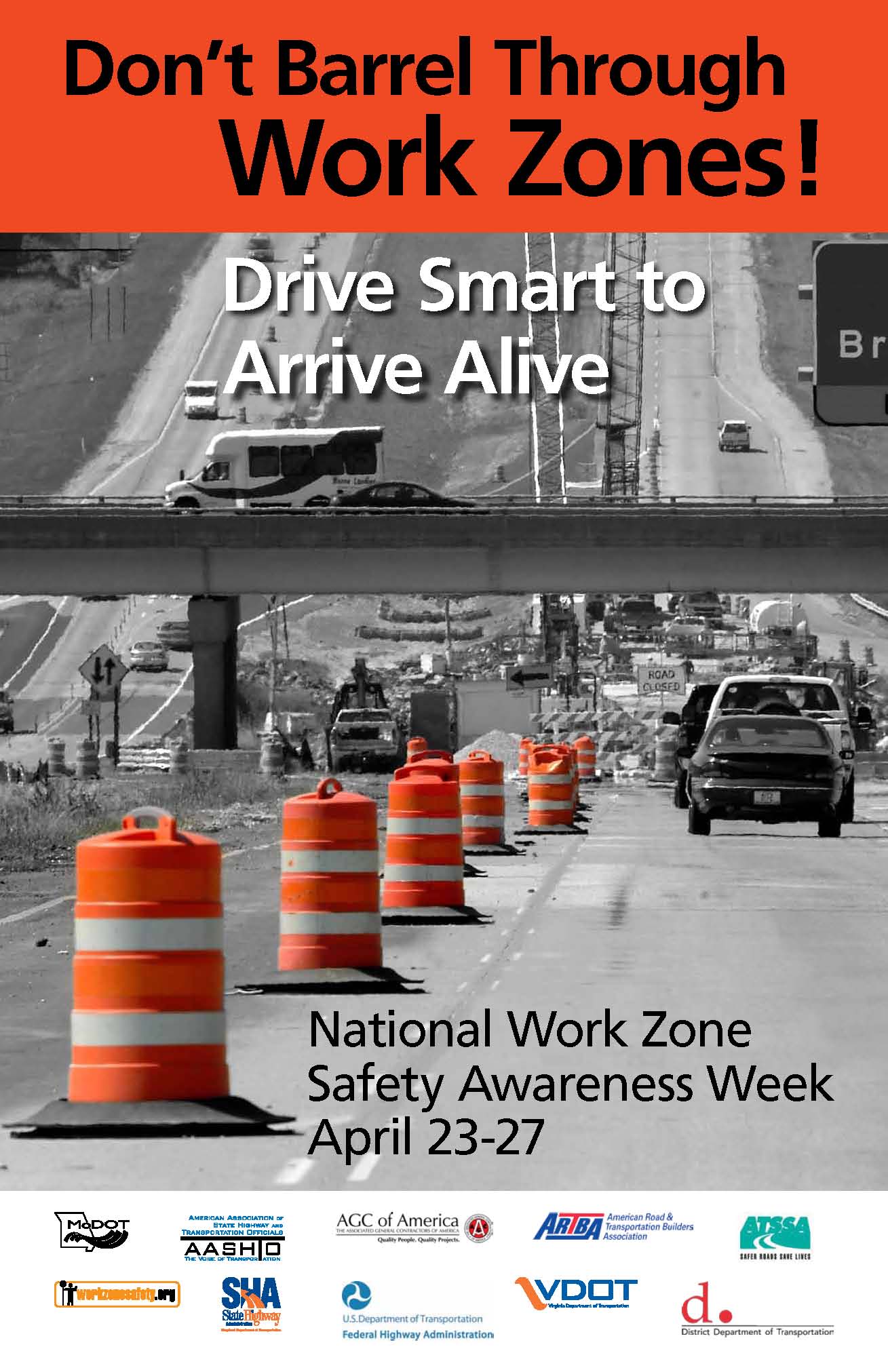 In 2010, work zone crashes killed 576 people and injured approximately 37,000. While road work is a dangerous occupation, the fact is that 85 to 90 percent of those killed in these crashes were drivers and their passengers.
In 2010, work zone crashes killed 576 people and injured approximately 37,000. While road work is a dangerous occupation, the fact is that 85 to 90 percent of those killed in these crashes were drivers and their passengers.
April 23 – 27 is National Work Zone Safety Awareness Week, a time to share with your citizens and entity drivers the importance of driving defensively through work zones.
We all know that unexpected delays and traffic congestion can add to everyday stresses, however being in a hurry can be costly – to you and to others. While you may take the same route to work every day, work zones can create unfamiliar situations such as a change in the traffic pattern, narrowed or closed lanes, and the challenge of navigating by construction equipment and workers.
Here are some tips to help drivers keep their cool as the spring and summer months heat up and construction along roadways increases.
- Check on the location of work zones by dialing 5-1-1, or listen to the local news and plan your route accordingly. You can also check the National Work Zone Safety Information Clearinghouse for information on work zones throughout the country.
- Keep an eye out for signs that warn of road construction and take appropriate action well in advance of encountering lane reductions. Typical work zone signs are orange, and are there to help drivers move safely through the work zone.
- Obey flaggers. The flagger knows what is best for moving traffic safely.
- Stay alert and minimize distractions – “orange cones, no phones.” Dedicate your full attention to the roadway.
- Slow down – and keep up with the flow of traffic. Speeding is one of the major causes of work zone crashes, so obey posted speed limits hwile keeping up with the flow of traffic.
- Avoid the urge to jockey for position at the entrances and exits to work zones.
- Always signal when changing lanes.
- Don’t block the passing lane. Stay to the right to avoid obstructing the flow of traffic.
- Don’t use your horn to express anger. Don’t make gestures.
- Don’t tailgate. The most common crash in a highway work zone is the rear end collision.
- Keep a safe distance from workers and their equipment.
- Cooperate and don’t compete on the road. Let other driers merge into traffic in an orderly fashion.
Remember, everybody makes mistakes. Chances are the other drivers on the road are not out to get you – so give ‘em a brake!
VMLIP has offers a Multimedia Library with training materials at no charge for eligible members. Check out Road Crew Safety, a DVD, in the VMLIP Multimedia Library.
[youtube=http://www.youtube.com/watch?v=mhH9FeNjaOU&feature=plcp]
VMLIP offers more than just coverage. We are partners in risk management. How does your insurer stack up? Having all lines of coverage with VMLIP ensures that your organization is receiving comprehensive coverage and a wide variety of value-added services tailored to Virginia’s local governmental entities. Call for a quote today: (800) 963-6800. For more information on VMLIP visit: www.vrsa.us or follow us on Facebook.
** VMLIP blog postings are offered for VMLIP members to utilize in strengthening their risk management efforts. See copyright information for clarification on sharing this information.


